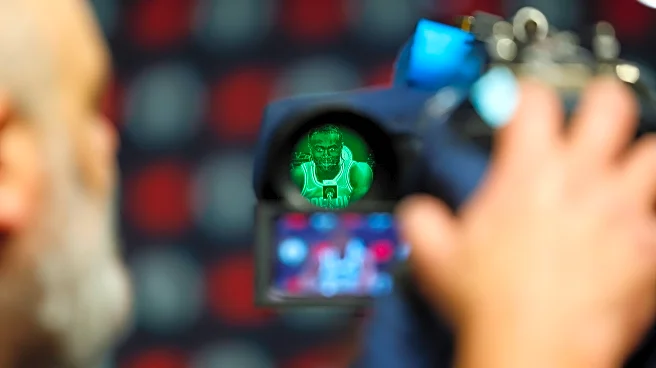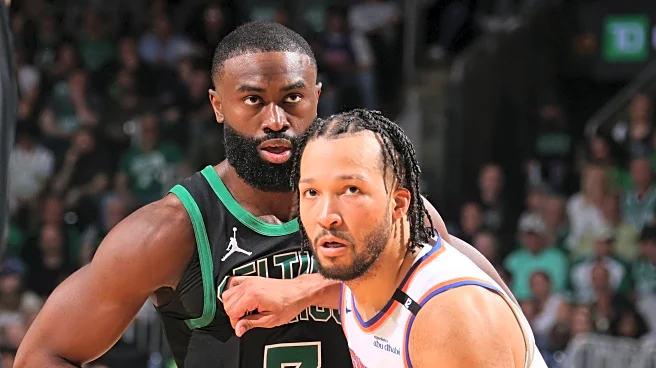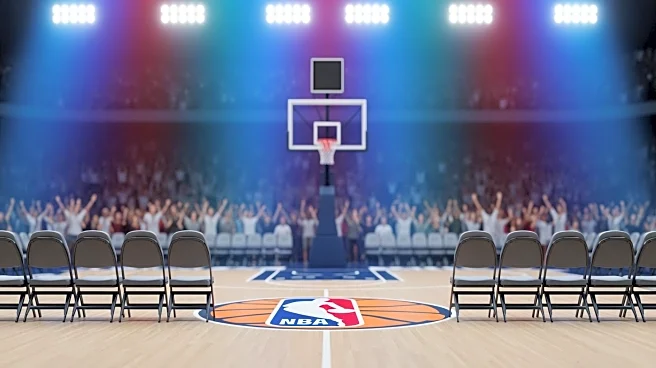What's Happening?
Prime Video is set to begin its exclusive broadcast of NBA games with the Boston Celtics facing the New York Knicks. This marks the start of a new 11-year deal between Prime Video and the NBA, which will
see 66 regular season games streamed exclusively on the platform. The inaugural game, a rematch of last season's Eastern Conference semifinals, will take place at Madison Square Garden. The Knicks enter the game following a victory against the Cleveland Cavaliers, while the Celtics are coming off a narrow loss to the Philadelphia 76ers. The game will not be available on traditional cable, requiring viewers to have an Amazon Prime subscription to access the stream.
Why It's Important?
The partnership between Prime Video and the NBA signifies a shift in how sports content is consumed, moving away from traditional cable networks to streaming platforms. This change reflects broader trends in media consumption, where viewers increasingly prefer on-demand and streaming services. The deal could impact cable networks that traditionally broadcast NBA games, potentially leading to changes in advertising revenue and viewership patterns. For Amazon, this represents an opportunity to expand its reach in the sports broadcasting market, potentially attracting new subscribers to its Prime service.
What's Next?
As the NBA season progresses, Prime Video will continue to broadcast key games, including the NBA Cup and Play-In tournament. This could lead to increased competition among streaming services for exclusive sports content. Stakeholders such as cable networks may need to adapt their strategies to retain viewership. Additionally, the success of this partnership could influence other sports leagues to consider similar deals with streaming platforms, further altering the landscape of sports broadcasting.
Beyond the Headlines
The move to streaming could have long-term implications for sports accessibility, potentially making games more available to a global audience. However, it also raises questions about digital inclusivity, as access to streaming services requires internet connectivity and subscriptions, which may not be feasible for all fans. This shift could also influence how sports are marketed and monetized, with streaming platforms offering new ways to engage audiences through interactive features and personalized content.












